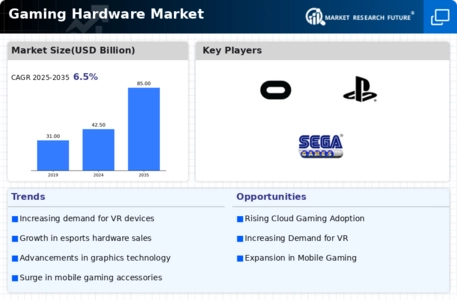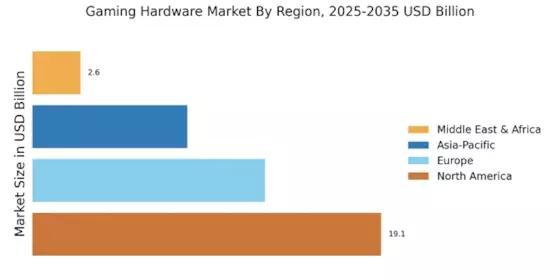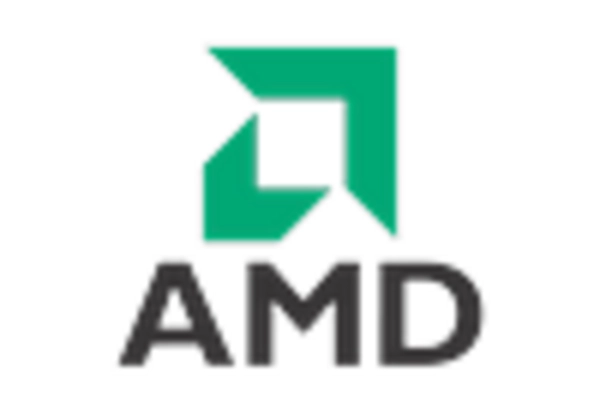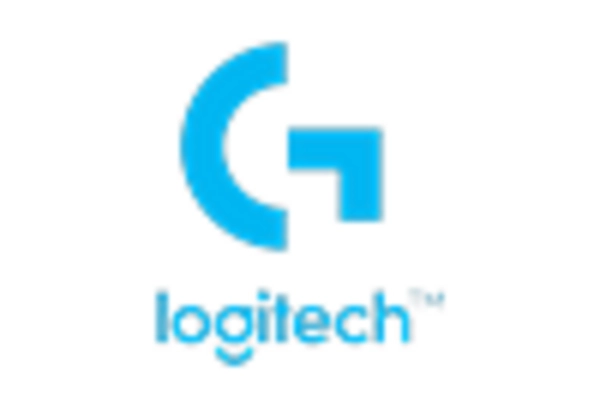The Gaming Hardware Market is currently characterized by a dynamic competitive landscape, driven by rapid technological advancements and evolving consumer preferences. Key players such as NVIDIA (US), AMD (US), and Razer (US) are at the forefront, each adopting distinct strategies to enhance their market positioning. NVIDIA (US) continues to lead in graphics processing units (GPUs), focusing on innovation in AI and machine learning capabilities, which are increasingly integral to gaming experiences. Meanwhile, AMD (US) has carved out a niche by offering competitive pricing and high-performance products, appealing to a broad spectrum of gamers. Razer (US), known for its gaming peripherals, emphasizes brand loyalty and community engagement, leveraging its strong presence in esports to drive sales. Collectively, these strategies contribute to a competitive environment that is both innovative and responsive to consumer demands.
In terms of business tactics, companies are increasingly localizing manufacturing and optimizing supply chains to enhance efficiency and reduce costs. The market structure appears moderately fragmented, with several players vying for market share, yet dominated by a few key firms that exert considerable influence. This competitive structure allows for a diverse range of products and innovations, catering to various segments of the gaming community.
In August 2025, NVIDIA (US) announced a strategic partnership with a leading cloud gaming service, aiming to enhance its GPU offerings for cloud-based gaming solutions. This move is significant as it positions NVIDIA to capitalize on the growing trend of cloud gaming, potentially expanding its customer base beyond traditional hardware sales. The partnership may also facilitate the integration of advanced AI features into cloud gaming platforms, further solidifying NVIDIA's leadership in the market.
In September 2025, AMD (US) unveiled its latest line of processors designed specifically for gaming laptops, which feature enhanced power efficiency and performance. This launch is crucial as it addresses the increasing demand for high-performance mobile gaming solutions, allowing AMD to compete more effectively against established players like Intel (US). By focusing on mobile gaming, AMD is likely to attract a new demographic of gamers who prioritize portability without sacrificing performance.
In October 2025, Razer (US) expanded its product line to include eco-friendly gaming peripherals, reflecting a growing consumer preference for sustainable products. This initiative not only aligns with global sustainability trends but also enhances Razer's brand image as a socially responsible company. By tapping into this emerging market, Razer may strengthen its competitive position and appeal to environmentally conscious consumers.
As of October 2025, the Gaming Hardware Market is witnessing trends such as digitalization, sustainability, and the integration of artificial intelligence. Strategic alliances are increasingly shaping the competitive landscape, enabling companies to leverage shared resources and expertise. Looking ahead, competitive differentiation is likely to evolve, with a pronounced shift from price-based competition to a focus on innovation, technological advancements, and supply chain reliability. Companies that can effectively navigate these trends will likely emerge as leaders in the gaming hardware sector.

















Leave a Comment